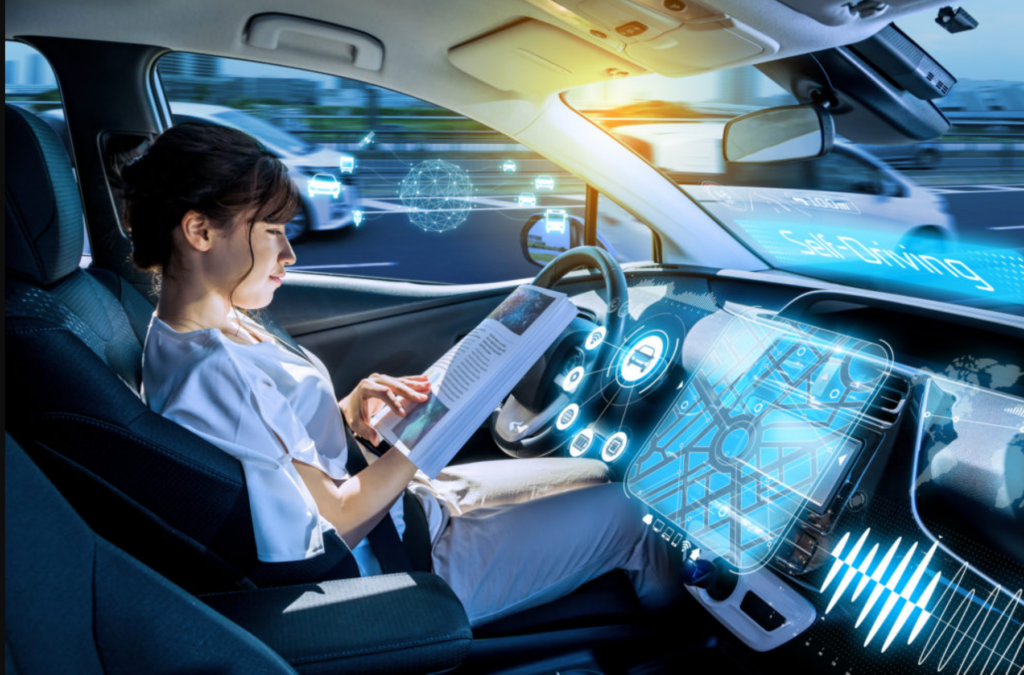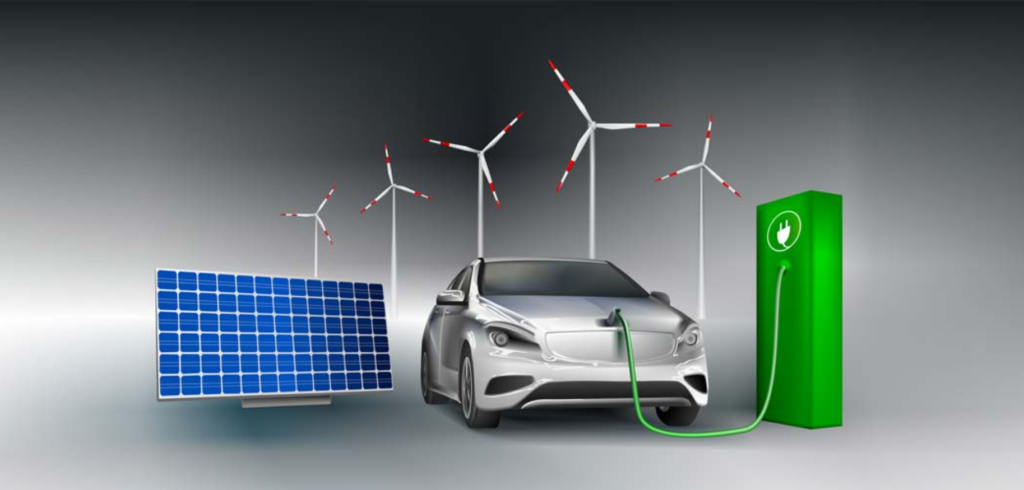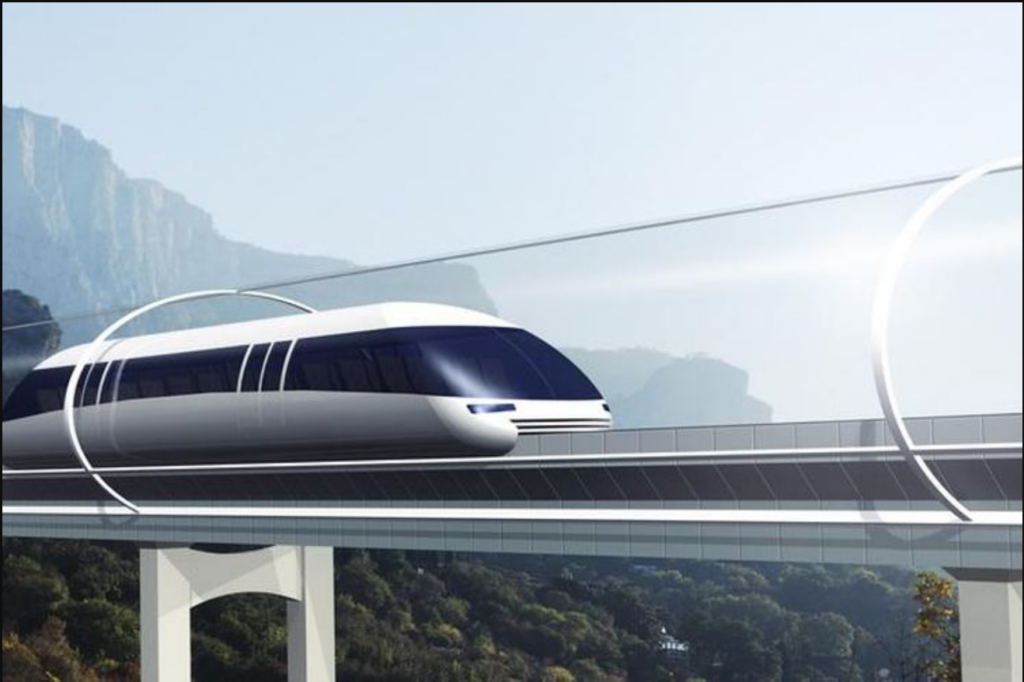
Transportation and logistics are two essential industries that greatly influence the global economy. With the rise in demand for faster, more efficient, and sustainable solutions, these sectors are evolving rapidly. New advancements in technology, materials, and infrastructure are transforming how goods and people move worldwide. From self-driving vehicles to smart warehouses, the next wave of Innovations Driving the Future of Transportation and Logistics promises improved speed, safety, and sustainability.
1. Autonomous Vehicles: A New Era of Self-Driving Transport

Autonomous vehicles represent one of the most innovative advancements in transportation. Self-driving cars, trucks, and drones are set to change the way goods and people travel. Using advanced sensors, AI, and machine learning, these vehicles can navigate roads without human intervention, leading to reduced human error, improved safety, and more efficient logistics operations. As a result, traffic congestion is likely to decrease, and transportation costs will lower.
Moreover, autonomous trucks can operate round-the-clock, eliminating the need for rest breaks, which will significantly boost delivery speeds. When paired with electric power systems, autonomous vehicles can contribute to a greener environment by reducing fuel consumption and emissions.
2. Electric Vehicles (EVs) and Charging Infrastructure: Innovations Driving the Future of Transportation and Logistics

Electric vehicles (EVs) are already transforming the transportation sector, and their impact is expected to grow. Thanks to advancements in battery technology and increased environmental awareness, EVs are becoming a more feasible choice for both personal and commercial transport. As battery efficiency improves, the range of electric vehicles increases, and the cost decreases, making them more accessible to businesses and consumers alike.
Furthermore, expanding the EV charging infrastructure will encourage widespread adoption. More charging stations mean that logistics companies can integrate electric trucks and delivery vehicles into their operations, making transportation cleaner and more cost-effective. Consequently, this trend will benefit businesses looking to reduce their carbon footprint while saving on operational costs.
3. Hyperloop: Revolutionizing High-Speed Travel

The Hyperloop is another promising innovation that could radically alter the way we think about transportation. By utilizing magnetic levitation and vacuum tubes, this high-speed system aims to transport passengers and goods at incredibly fast speeds. In fact, it could cut travel times between major cities to mere minutes, making long-distance travel more efficient and affordable.
For the logistics industry, the potential benefits of the Hyperloop are vast. Cargo could travel faster than ever before, reducing delivery times and increasing supply chain efficiency. As development continues, this technology could offer a viable alternative to traditional rail and air travel, offering substantial advantages in terms of speed, sustainability, and cost.
4. Drones in Logistics: Airborne Delivery Systems, Innovations Driving the Future of Transportation and Logistics
Drones are increasingly becoming an integral part of modern logistics. These small, unmanned aerial vehicles are already being used for short-distance delivery, allowing goods to bypass road traffic and be delivered quickly. Major companies such as Amazon and UPS have already incorporated drones into their operations, especially for last-mile deliveries.
As drone technology advances, their range and payload capacity will increase, opening up more possibilities for their use in logistics. This will be particularly beneficial for reaching remote areas or places where traditional delivery methods are challenging. Additionally, drones offer a unique opportunity for companies to reduce delivery times and enhance customer satisfaction.
5. Artificial Intelligence and Big Data in Logistics: Innovations Driving the Future of Transportation and Logistics
Artificial intelligence (AI) and big data are having a profound impact on the logistics industry. By analyzing large amounts of data, AI can optimize transportation routes, predict delivery times, and automate warehouse processes. This enables businesses to make more informed decisions, improve efficiency, and reduce operational costs.
For example, AI-powered systems can analyze traffic patterns and adjust delivery routes in real-time, ensuring that products arrive faster. By forecasting demand and potential disruptions, companies can better manage their supply chains, enhancing customer service and reducing delays. Overall, the integration of AI and big data into logistics operations makes the entire process more efficient and reliable.
6. Smart Warehousing: Automation and Robotics in Action
Automation is at the core of the future of warehousing. Smart warehouses utilize a combination of robotics, AI, and IoT (Internet of Things) to streamline inventory management, picking, and packing processes. By automating these tasks, businesses can save time, reduce errors, and increase overall productivity. As technology improves, more advanced robots are being developed to handle increasingly complex tasks.
In addition, AI-powered systems can optimize warehouse layouts, automatically track inventory, and predict stock levels in real-time. The rise of smart warehouses will make logistics operations more agile, reducing costs and improving speed. These advancements will allow businesses to respond more quickly to customer demands and market changes, ensuring a smoother and more efficient supply chain.
7. Blockchain for Supply Chain Transparency: Innovations Driving the Future of Transportation and Logistics
Blockchain technology is poised to transform how supply chains are managed. This secure, transparent, and tamper-proof system enables businesses to track goods as they move through the supply chain. Blockchain offers a secure way to record transactions, ensuring that goods are accurately tracked from their point of origin to their final destination.
With blockchain, logistics companies can reduce errors and fraud while improving the traceability of shipments. This increased transparency provides customers with real-time updates on the status of their goods, improving trust and satisfaction. Furthermore, blockchain can reduce paperwork and speed up customs processes, making cross-border trade more efficient.
8. 3D Printing for On-Demand Manufacturing
3D printing technology is revolutionizing the logistics industry by enabling on-demand manufacturing. Companies can now produce parts or even entire products as needed, which eliminates the need for long supply chains and inventory management. By producing items locally, businesses can reduce transportation costs and the environmental impact associated with shipping.
This shift to on-demand production will also shorten lead times, allowing businesses to respond more quickly to changes in customer demand. Additionally, 3D printing helps reduce waste, as products are only created when required. This innovation promises to make the entire manufacturing and logistics process more sustainable and efficient.
9. Autonomous Cargo Ships: Revolutionizing Maritime Transport, Innovations Driving the Future of Transportation and Logistics
Autonomous cargo ships are set to transform the shipping industry. These vessels, equipped with advanced sensors, AI, and GPS systems, can navigate the seas without human intervention. Autonomous ships can operate continuously, reducing the need for rest breaks and increasing the speed of international trade.
Moreover, autonomous ships can optimize routes and fuel consumption, making them more efficient and environmentally friendly than traditional cargo vessels. These innovations will help reduce operating costs, increase safety, and minimize environmental impact, offering a more sustainable approach to global shipping.
10. Sustainable Aviation Fuel (SAF): Innovations Driving the Future of Transportation and Logistics
Sustainable aviation fuel (SAF) represents an important step in making air travel more eco-friendly. SAF is produced from renewable sources, such as plant oils and waste materials, and has a much lower carbon footprint than conventional jet fuel. As more airlines adopt SAF, the aviation industry’s contribution to carbon emissions will decrease, helping to combat climate change.
The widespread adoption of SAF is expected to lower the environmental impact of air travel and reduce operating costs for airlines. With further investment in SAF production and infrastructure, this fuel could become the standard for commercial air travel, contributing to a cleaner, more sustainable future for the industry.
11. Electric and Hydrogen-Powered Trucks: Innovations Driving the Future of Transportation and Logistics
Electric and hydrogen-powered trucks are becoming increasingly common in the logistics industry. These trucks provide an alternative to traditional diesel-powered vehicles, offering significant environmental benefits. Electric trucks, in particular, are already being used for local deliveries, while hydrogen-powered trucks are well-suited for long-haul freight.
The widespread adoption of electric and hydrogen trucks will reduce emissions and lower operating costs for logistics companies. Furthermore, as charging and refueling infrastructure expands, these vehicles will become more practical and efficient, allowing businesses to make their transportation networks cleaner and more sustainable.
12. Smart Traffic Management Systems
Smart traffic management systems use real-time data and AI to optimize traffic flow in cities. By monitoring and adjusting traffic signals based on current conditions, these systems can reduce congestion, cut down on delays, and improve overall transportation efficiency. For the logistics sector, this means that delivery vehicles can avoid traffic bottlenecks, ensuring faster and more reliable deliveries.
In addition to improving travel time, smart traffic management systems also help reduce fuel consumption and emissions by minimizing the time vehicles spend idling. These systems will be crucial in creating more efficient and sustainable urban transportation networks.
13. The Role of Mobility-as-a-Service (MaaS)
Mobility-as-a-Service (MaaS) is an innovative concept that integrates different modes of transportation into one convenient platform. By combining ride-sharing, public transit, and even bike-sharing options, MaaS makes it easier for people to plan and pay for their travel. This system enhances convenience and flexibility while reducing the need for personal vehicles.
In logistics, MaaS can help optimize the movement of goods by using a combination of transportation methods. By integrating trucks, drones, and electric vehicles into a cohesive system, logistics companies can improve efficiency and reduce costs while providing a more sustainable transportation solution.
14. Urban Air Mobility (UAM)
Urban Air Mobility (UAM) involves the use of eVTOL (electric vertical takeoff and landing) aircraft to transport people and goods in urban environments. These aircraft are designed to reduce traffic congestion by flying over cities, offering a faster and more efficient alternative to ground transportation. As UAM technology advances, it could become a common feature in urban landscapes, with air taxis and delivery drones reshaping city transport.
UAM has the potential to revolutionize logistics in urban areas by providing rapid delivery solutions that bypass road traffic. With environmental benefits, such as reduced congestion and emissions, UAM will contribute to cleaner, more efficient transportation systems in cities.
15. The Internet of Things (IoT) for Real-Time Tracking
The Internet of Things (IoT) is transforming how businesses manage their logistics operations. IoT devices allow for real-time tracking of shipments, providing constant updates on the location, condition, and temperature of goods. This technology enhances transparency and enables businesses to monitor the status of their supply chains more effectively.
Through IoT, companies can respond to issues more quickly and ensure that goods are delivered in optimal conditions. As IoT devices become more widespread, they will continue to improve the efficiency, safety, and reliability of logistics operation.